SPOTLIGHT
Arsenic-contaminated drinking water found in two South African villages, scientists blame state mismanagement
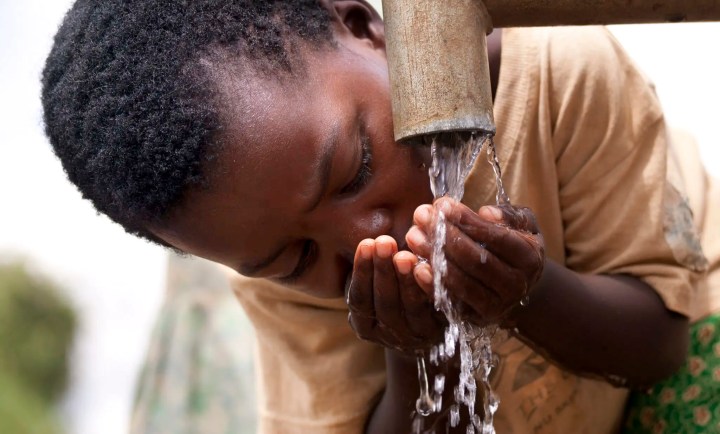
A study published in April 2023 found that residents in two villages in Limpopo’s Giyani local municipality have dangerous amounts of arsenic in their drinking water. Attempts to improve access to safe water in the area appear to have been derailed by alleged corruption. Jesse Copelyn unpacks the risks of excessive arsenic exposure and what is known about the alleged corruption in Giyani.
Co-authored by scientists at the South African Medical Research Council (SAMRC), the study shows that a worrying number of the villagers had high levels of arsenic in their blood and that this was associated with arsenic contamination of garden soil and borehole water.
Arsenic is a chemical that, at high levels, increases the risk of cancer and may reduce cognitive function.
High arsenic concentrations in the ground may be naturally occurring in the two villages – Maswanganyi and Muyexe – or might be caused by nearby gold mines (gold is often bound up with arsenic-containing minerals which are sometimes released into the ground as part of the waste rock produced by mining). According to Thandi Kapwata, lead author of the paper, it appears that the arsenic in the soil is leaching into people’s boreholes, which most of the sampled residents are forced to rely on in the absence of piped water.
Maswanganyi and Muyexe were both meant to receive potable water along with 53 other villages under the Giyani Bulk Water project, a multibillion-rand scheme that was initiated in 2014 by the Department of Water Affairs and Sanitation, but has since been repeatedly stalled, allegedly due to maladministration and corruption.

Senzo Mchunu, minister of water and sanitation. (Photo: Gallo Images / Darren Stewart)
Spokesperson for the Department of Water Affairs and Sanitation, Wisane Mavasa, says the Giyani project had been “marred by serious challenges of poor management and corruption which had led to the loss of billions of rands and the project stalling for several years”.
There is no universally agreed threshold for safe levels of arsenic that a person can have in their blood.
Indeed, as early as 2016, the department admitted to Parliament that the implementing agent, Lepelle Northern Water (a state-run utility), had incurred R1.3-billion in irregular spending on the Giyani project in that year alone. The Special Investigating Unit (SIU) began inquiring into the matter that year, later telling Parliament that the contracts to work on the project had been irregularly awarded, costs had been artificially inflated, the treatment plant that had been built only worked for a month, and that the communities still weren’t connected to the water system.
Yolande Nel, spokesperson for Lepelle, said: “The challenges [laid out by the SIU above] have been ironed out for successful delivery of the project. The project has reached practical completion and [Lepelle] is busy with the commissioning and finalisation of the snag list.” (Read their full response to Spotlight here.)
Mavasa says the Giyani project was resumed after Senzo Mchunu was appointed minister of water affairs and sanitation in 2021. Since then, construction of a pipeline to deliver raw water from the Nandoni dam to the Nsami (near the villages in Giyani) has been completed. Mavasa says, however, that the treatment plant in Giyani is still being refurbished. The first 24 villages are expected to receive water in December 2023, including Maswanganyi and Muyexe. (See the department’s full response to Spotlight here.)
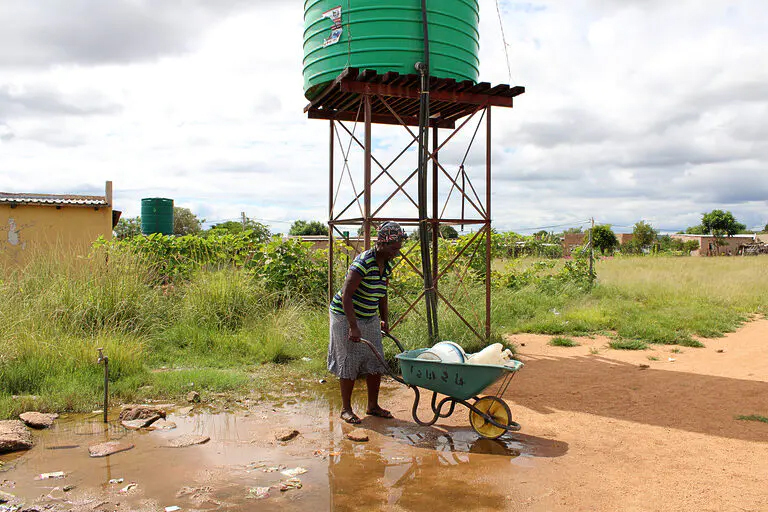
Study findings show that a worrying number of the villagers in areas of Limpopo had high levels of arsenic in their blood and that this was associated with arsenic contamination of garden soil and borehole water. (Photo: Masego Mafata / GroundUp / Spotlight)
But the failure to deliver piped water to the two villages earlier appears to have had consequences that were not previously understood. Angela Mathee, the head of the SAMRC’s Environment and Health Research Unit and co-author of the recent study, says that if the villagers had access to clean tap water, arsenic poisoning would likely be less prevalent.
Nearly 40% of drinking water is arsenic-contaminated in Maswanganyi
The study, which was published in Environmental Science and Pollution Research, enrolled 66 participants across Maswanganyi, Muyexe, and a third village, Tomu, and tested the amount of arsenic in their blood, as well as the garden soil and drinking water at their homes.
There is no universally agreed threshold for safe levels of arsenic that a person can have in their blood. Canada’s National Research Council holds that people who have never been significantly exposed to the chemical can have anywhere between 0.3 and 2 micrograms of arsenic for every litre of blood (µ/L) and that in fishing towns it may be even higher (since seafood contains less-harmful forms of organic arsenic). The US Health Department’s Agency for Toxic Substances and Disease Registry (ATSDR) has a more conservative threshold of 1 µ/L.
The results of the study showed that 80% of people tested in Maswanganyi had more than the ATSDR-recommended level – the worst affected were more than four times the threshold. In Muyexe, a little under half of residents had raised blood-arsenic levels, while the figure was significantly lower in Tomu.
The research also found a correlation between the amount of arsenic people had in their blood and in their drinking water. Almost two in five water samples in Maswanganyi had more than 10µg of arsenic per litre – the maximum threshold recommended by the World Health Organization (WHO). Most of the samples came from boreholes, which the vast majority of residents used for drinking water across the three villages (a minority supplemented this with tap water).
Research has also repeatedly found that the more arsenic children have in their drinking water, the worse they perform in general intelligence tests.
Consistent with a previous study done in Maswanganyi, the research also showed that most of the soil samples in the village exceeded the Canadian threshold of 20 milligrams of arsenic per kilo of soil.
The chemical may thus be making its way into residents’ blood via the drinking water or through contact with soil (which could happen if the chemical contaminated home-grown vegetation). However, according to Mathee, “water is usually the primary route of exposure to arsenic”. This is a view shared by the WHO.
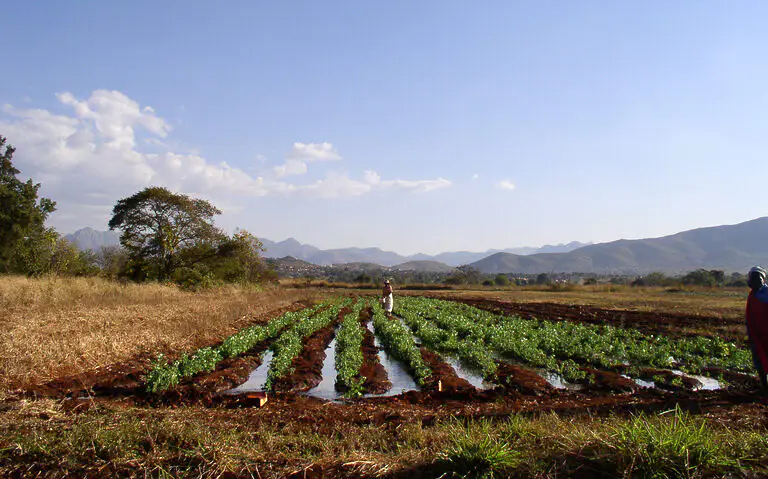
Research findings show that in Maswanganyi in Limpopo, most of the soil samples in the village exceeded the Canadian threshold of 20 milligrams of arsenic per kilo of soil. (Photo: IFPRI / Spotlight)
Link to cancer and impaired intelligence
The International Agency for Research on Cancer, a WHO agency, holds that there is sufficient evidence to show that when people drink arsenic-contaminated water for long enough, it increases their risk of bladder, lung and skin cancer. This usually happens after 20 to 30 years, though one small study suggests that it may take three to nine years in the case of bladder cancer. Most of the arsenic that a person consumes is urinated out after a few days, though some of it remains in the body for months – possibly more. Other well-established harms include skin problems like chronic itchiness, which may happen after about five years of drinking arsenic-contaminated water.
Research conducted in Bangladesh and the US has also repeatedly found that the more arsenic children have in their drinking water, the worse they perform in general intelligence tests (this includes evaluations of IQ, memory, and verbal intelligence). Although it is not clear whether the link is causal, one recent paper, published in the Review of Economic Studies, suggests it might well be.
Scientists aren’t certain about why excessive exposure to the chemical inflicts so much damage, but there are a number of potential pathways, one of which is its effects on the epigenome.
Epigenetic modifications occur when chemical tags are attached to our DNA, which “activate” or “deactivate” certain genes. Consider that every cell in the body typically contains the same DNA (and thus the same set of basic instructions for how to develop) yet cells in an organ like the heart are very different to those in, say, the liver. The reason is due to epigenetic modifications. A gene that is needed for the heart to function may be unnecessary for the liver, and may thus be “deactivated” in liver cells.
Arsenic appears to cause a range of health problems by interfering with this system. For instance, certain genes that are involved in suppressing tumours can become “deactivated” by epigenetic modifications – and this becomes more common when people are exposed to arsenic. It’s probably for reasons such as this that a host of observational studies find that people who have more arsenic in their drinking water are more likely to get cancer.
The ability of arsenic to interfere with the epigenome may also be one of the reasons that it causes intellectual impairments. For instance, when researchers gave rats arsenic-laced water they found that genes involved in memory formation became disrupted.
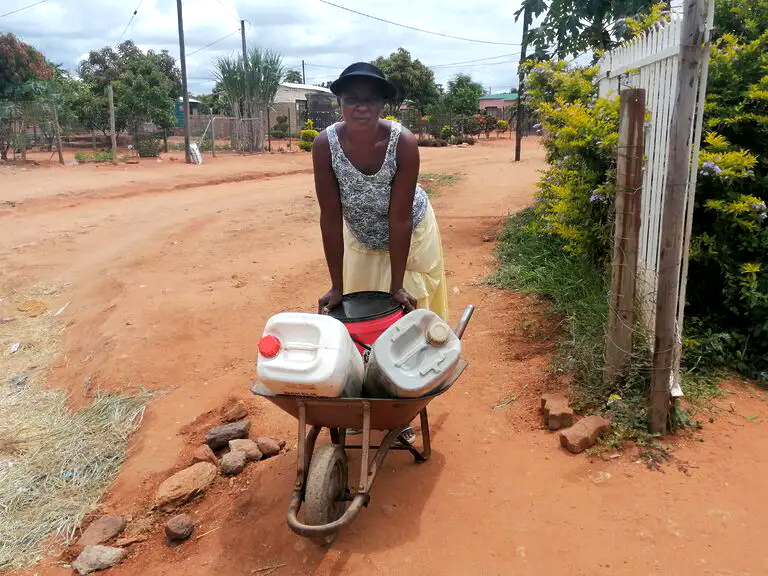
The Giyani Water project in Limpopo has stalled for years and experts say this has a detrimental impact on public health. (Photo: Bernard Chiguvare / Groundup / Spotlight)
Arsenic poisoning a ‘cost of corruption and mismanagement’?
Given its harms, preventing arsenic poisoning should be a high priority for the government, yet Limpopo is not the only part of South Africa where government mismanagement has allegedly gone hand in hand with increased exposure to the chemical.
For instance, a 2018 study for which soil samples were taken from household gardens across working-class suburbs in Johannesburg, found widespread arsenic contamination. Riverlea, in west Johannesburg, was the worst affected with more than half of the samples exceeding the Canadian reference level.
The researchers think that this may be due to the fact that many homes in the area are next to large mining waste facilities, which contain a host of toxic metals. Some of the facilities were apparently trying to extract additional gold out of the waste – which can generate airborne dust containing arsenic. Government failure to establish buffer zones meant that some homes were apparently just 100m to 200m from the waste sites.
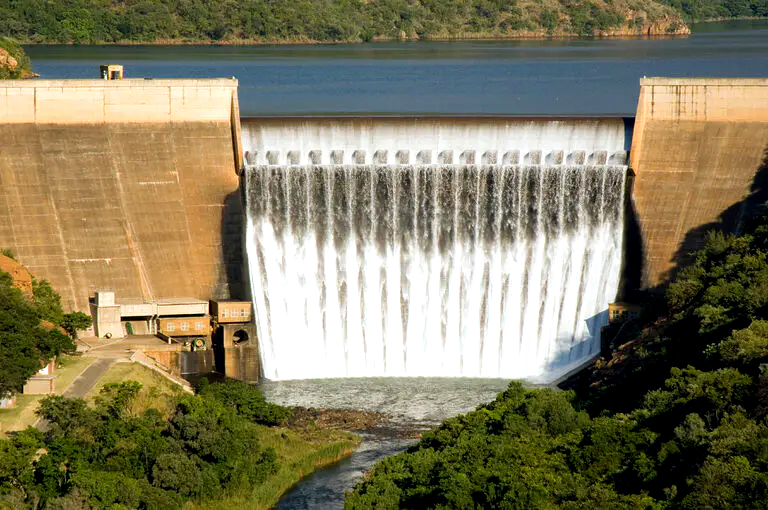
Dam wall of the Blyde River dam in Hoedspruit Limpopo. (Photo: Chris Kirchhoff / Spotlight)
A similar problem was identified in Soweto in 2022 when researchers found that blood samples of residents living near mine waste facilities contained dangerous amounts of lead, another highly toxic metal.
Read more in Daily Maverick: Two years after UPL chemical inferno outside Durban, still no sign of a criminal trial
But for those in Limpopo, Mathee says the problem could have already been addressed. “This is really a case where corruption and mismanagement have a detrimental impact on public health because the Giyani Water project has stalled for years and it’s linked to [corruption] and mismanagement,” she says. “If that project provides clean, safe and reliable water to these villages, and they don’t have to use the boreholes, then we hope that their blood-arsenic levels will decline.
“It’s been fairly encouraging that minister Senzo Mchunu has said that the Giyani Water project is now back on track,” Mathee says, “and that they’re making good progress after all the delays… That would be the most important intervention [for reducing arsenic] among the affected communities.”
The SIU, meanwhile, also appears to have made progress with its investigation. In June, it announced that it had obtained a preservation order to freeze the pension benefits of an ex-manager at Lepelle in connection with an allegedly irregular tender that had been awarded. The SIU notes that Lepelle had appointed a consulting company in 2014 to build the infrastructure that would supply villages in Giyani with clean water at a cost of R90.9-million, but that this “ballooned to R2.2-billion in 30 days without following supply chain processes governing public procurement”.
It later increased to R3.3-billion. DM
This article was published by Spotlight – health journalism in the public interest.









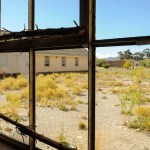










Comments - Please login in order to comment.